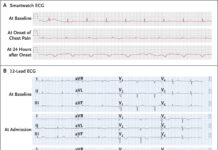Eosinophilic Fasciitis
Eosinophilic fasciitis is a rare condition that presents with inflammation of the tough band of fibrous tissue beneath the skin, known as the fascia. The arms and legs are the most commonly affected. The aberrant buildup of specific white blood cells, particularly eosinophils, in the fascia causes inflammation. Eosinophilic fasciitis causes the skin to enlarge, thicken, and harden (induration). The disorder is most commonly seen in middle-aged adults. The particular symptoms and severity of eosinophilic fasciitis can differ from person to person. However, the cause of eosinophilic fasciitis is still not known.
Shulman syndrome, also known as eosinophilic fasciitis, was first described by physician, Dr Andrew Shulman in 1974 and so was named after him. According to some studies, eosinophilic fasciitis is a form of scleroderma (systemic sclerosis), an autoimmune connective tissue illness marked by skin stiffening. These, however, are usually distinguishable by their clinical characteristics.
Case study: eosinophilic fasciitis
A 66-year-old man went to the dermatology clinic with an 8-month history of severe, painful skin tightening and oedema in his arms and legs. He had been treated for scleroderma with oral glucocorticoids and methotrexate, but his symptoms had worsened. Physical examination revealed symmetric, woody induration of the trunk, arms, and legs, with the hands and feet untouched. The affected skin was dimpled (peau d’orange alterations) (Panel A, asterisk). The “groove sign” (Panel A, arrows) was discovered when the arms were elevated.
There were additional reports of elbow contractures. An absolute eosinophil count of 2040 cells per cubic millimetre (reference range, 15 to 500) and a normal antinuclear antibody level were found in laboratory investigations. A skin biopsy was conducted on the left arm. In the deep reticular dermis and subcutis, a histopathological investigation revealed a perivascular and interstitial inflammatory infiltration of lymphocytes and eosinophils (Panel B, hematoxylin and eosin stain). The patient was diagnosed with eosinophilic fasciitis. Because of the severity of the patient’s symptoms and the lack of previous response to oral glucocorticoids and methotrexate, intravenous methylprednisolone, oral mycophenolate mofetil, and intravenous immune globulin were administered. His symptoms had significantly improved after 4 months of follow-up.
Signs and symptoms
Although researchers have established a distinct condition with distinguishing or “core” symptoms, much regarding eosinophilic fasciitis remains unknown. Several difficulties, including a small number of recognized instances, a lack of major clinical investigations, and the possibility of unknown influencing factors, preclude clinicians from generating an accurate picture of associated symptoms and prognosis. As a result, it is critical to emphasize that affected individuals may not exhibit all of the symptoms listed below.
Eosinophilic fasciitis usually develops suddenly (acutely) during a few days or weeks. The condition may advance quickly in some circumstances. A less severe kind of disease that proceeds more slowly can arise less frequently. In many cases, an episode of eosinophilic fasciitis follows a period of vigorous physical activity.
Specific symptoms and severity can vary widely from person to person
In most cases, both sides of the body are afflicted, although unusual occurrences of only one side of the body being affected have also been described (unilateral eosinophilic fasciitis). The first signs of eosinophilic fasciitis are pain, swelling, and skin inflammation, particularly in the arms and legs. Arms and forearms are more commonly affected than legs and thighs. Hands and feet are typically unaffected. Tenderness may develop in affected areas at first. Individuals affected may acquire shallow grooves or furrows in their skin along the courses of underlying veins (venous grooving).
Affected skin may become reddish (erythema) and heated, thickening and hardening with time (induration). The skin may eventually lose its suppleness and exhibit a distinctive woody, puckered, or orange-peel texture. These gradual skin alterations have the potential to impair arm and leg mobility. Contractures occur when the joints in the arms and legs become locked in unexpected postures. Other places that may be affected on a rare basis include the face, abdomen, buttocks, and chest. Localized scleroderma (morphea) may develop in some situations.
Conclusion
Some researchers believe eosinophilic fasciitis is a kind of scleroderma or morphea (localized scleroderma). These rare illnesses are distinguished by the hardening and thickness of the skin and surrounding tissue, which is frequently caused by immune system failure. However, according to some experts, eosinophilic fasciitis is one of the numerous illnesses that should be classified as a fasciitis-panniculitis syndrome (FPS). This category of disorders is distinguished by skin hardness and thickness caused by inflammation and fibrosis.




